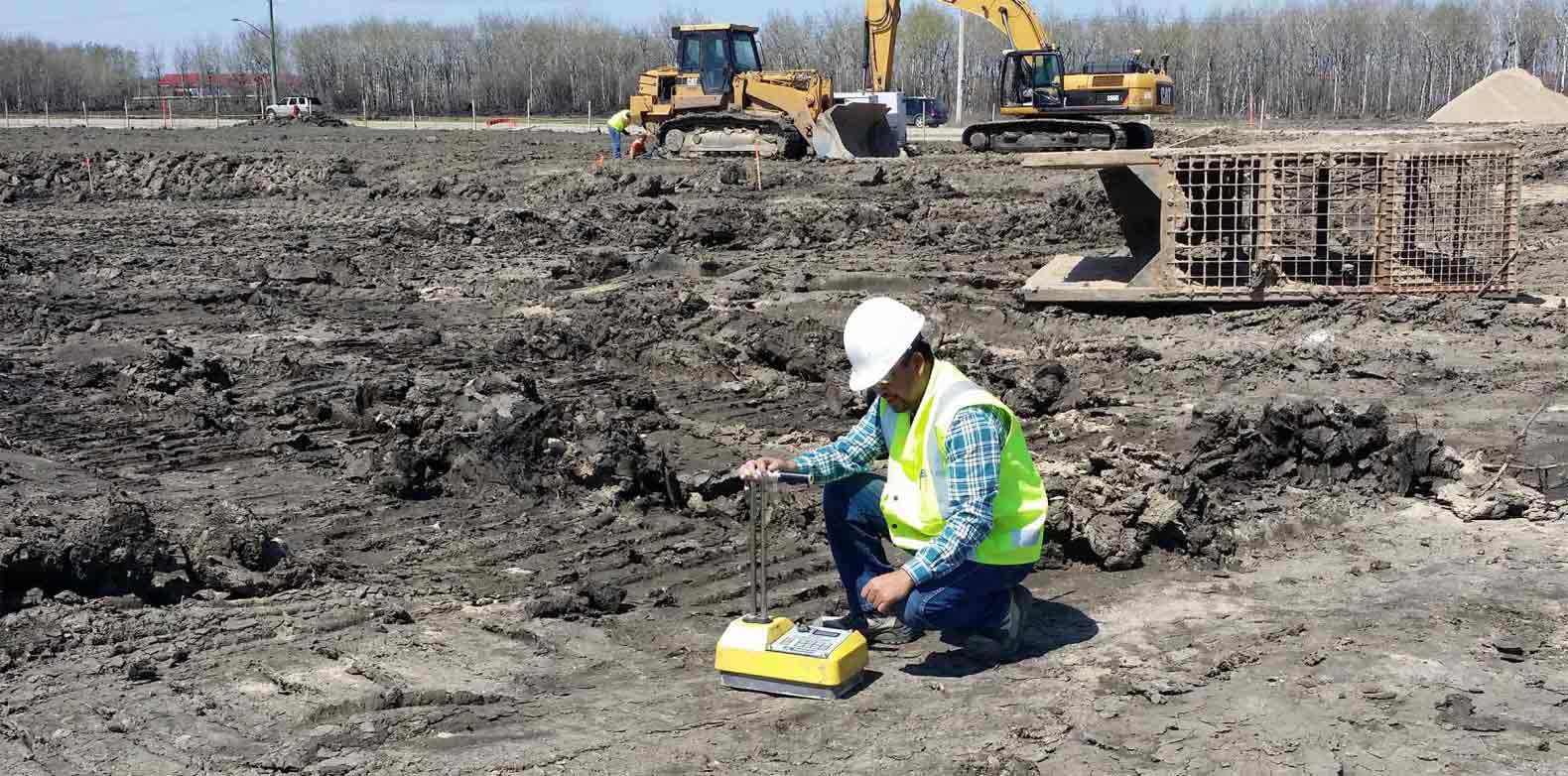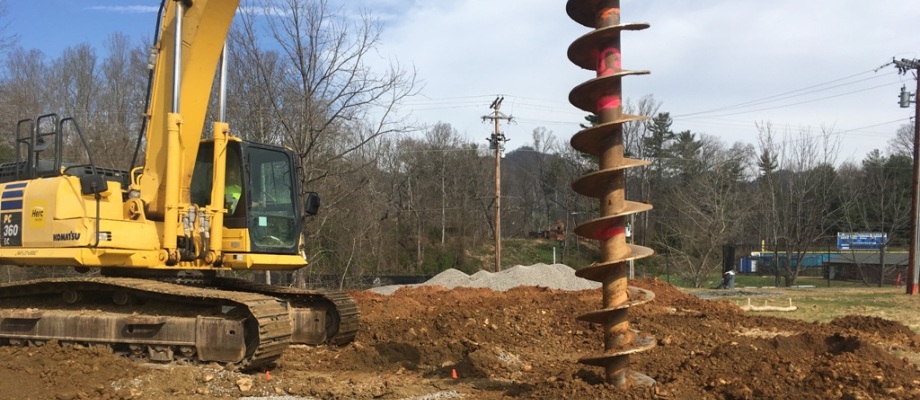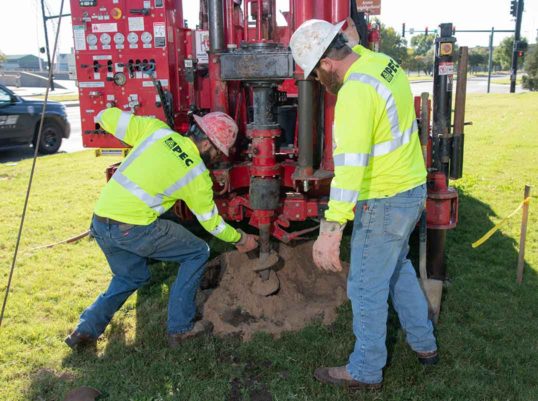Selecting the Right Consulting Engineer for Your Complicated Engineering Project
Wiki Article
Discovering the Innovative Methods and Technologies Shaping the Future of the Geotechnical Industry for Lasting Design Solutions
The geotechnical market is undertaking a transformative change, driven by innovative strategies and modern technologies that stress lasting engineering solutions. Advanced dirt stablizing techniques, using clever products, and the application of data analytics are redefining how we come close to facilities challenges. As these advancements advertise environmental stewardship, they likewise elevate essential concerns about their sensible execution and long-lasting performance. Recognizing the interaction between these innovations and their possible to transform the field welcomes further expedition into the future of lasting design practices.Advanced Dirt Stabilization Techniques
Soil stablizing is an important process in geotechnical engineering, intended at enhancing the physical residential or commercial properties of dirt to improve its load-bearing capability and resilience. Advanced dirt stablizing techniques play an essential duty in dealing with difficulties connected with unsteady or weak dirts, therefore enabling safe and efficient building and construction practices.Among the popular techniques, chemical stablizing entails making use of additives such as lime, cement, or fly ash, which react with soil bits to develop a much more natural mass. This strategy is specifically effective in improving the stamina and wetness resistance of extensive clay dirts. Mechanical stablizing, on the various other hand, entails the physical change of dirt residential or commercial properties with compaction or the consolidation of granular materials, causing boosted thickness and security.
An additional innovative approach is the use of geosynthetics, which supply reinforcement and lower soil erosion while enhancing drain. Methods like dirt mixing and deep soil stablizing are likewise gaining grip, enabling in-situ treatment of problematic soils. Collectively, these advanced approaches not just improve the performance of soil frameworks yet also add to sustainable engineering methods by decreasing the need for substantial excavation and material transport.
Smart Products in Geotechnics
Technology goes to the forefront of geotechnical engineering, especially with the unification of wise materials that improve the performance and performance of soil frameworks. Smart materials, such as shape memory alloys, piezoelectric products, and self-healing polymers, are reinventing the method engineers come close to soil stabilization and infrastructure long life (geo tech engineer). These products can adapt to transforming environmental conditions, react to stress, and even fix themselves, substantially boosting the durability of geotechnical systemsFor circumstances, piezoelectric materials can create electrical costs in response to mechanical anxiety, using potential for real-time tracking of soil conditions and architectural stability. In a similar way, self-healing materials can autonomously fix damages and fractures, decreasing upkeep costs and prolonging the life-span of geotechnical possessions. The assimilation of these smart materials not just boosts the mechanical buildings of soil however additionally adds to sustainable design techniques by minimizing resource usage and ecological influence.
As the geotechnical industry continues to progress, the fostering of clever materials will play an important role in establishing cutting-edge remedies, guaranteeing that facilities are not just durable but also adaptable to future difficulties. This transformative technique is positioned to redefine the standards of safety and performance in geotechnical engineering.
Data Analytics for Facilities
The combination of clever materials in geotechnical engineering has paved the way for sophisticated techniques, specifically in the realm of data analytics for facilities. This ingenious technique leverages extensive data collection and analytical methods to improve decision-making procedures throughout the framework lifecycle. By making use of sensing units installed in wise materials, engineers can continuously monitor vital specifications such as soil stability, moisture degrees, and architectural stability.Data analytics enables the transformation of raw data into actionable insights, enabling for predictive maintenance and improved risk management. Advanced formulas and equipment understanding strategies promote the recognition of patterns and anomalies, which can educate prompt treatments and enhance resource allocation. In addition, incorporating geographical details systems (GIS) improves spatial analysis, more improving the decision-making framework.
As infrastructure tasks grow in complexity, the dependence on data analytics becomes significantly necessary. It promotes an aggressive technique, minimizing the chance of failures and ensuring the long life and sustainability of structures. By taking advantage of the power of data analytics, the geotechnical market is placed to not only boost current methods however additionally pioneer ingenious solutions for future facilities obstacles. This synergy of innovation and design principles will certainly specify the future of sustainable framework development.

Sustainable Ground Renovation Methods
Numerous sustainable ground renovation techniques are emerging as essential services to resolve the difficulties of geotechnical design while reducing environmental influence. These techniques not only boost soil efficiency but likewise advertise ecological stewardship by minimizing dependence on conventional, a lot more intrusive strategies.
An additional ingenious approach is the application of geosynthetics, that includes naturally degradable products that reinforce dirt while promoting drainage and erosion control - engineer of record. This decreases the demand for heavy machinery and decreases site disturbance, hence preserving regional ecological communities
On top of that, methods such as vibrant compaction and vibro-replacement have developed to consist of lasting methods, decreasing and including recycled products carbon impacts. These techniques exhibit the sector's shift towards more ecologically liable solutions, ensuring that ground improvement not only satisfies engineering demands however likewise adds favorably to the surrounding atmosphere.
Technologies in Ecological Surveillance
In the last few years, improvements in ecological surveillance have actually dramatically boosted the capacity to analyze and take care of geotechnical jobs with very little environmental interruption. Ingenious innovations, such as remote noticing, Web of Things (IoT) devices, and real-time data analytics, are changing just how ecological influences are determined and alleviated.Remote noticing innovations, including satellite imagery and airborne LiDAR, promote the rapid analysis of land usage changes and environmental problems - geo tech engineer. These tools permit for continual surveillance of sites, allowing engineers to recognize possible problems before they rise. Furthermore, IoT devices, equipped with sensing units for specifications like dirt moisture, temperature level, and gas exhausts, supply live information streams that improve the understanding of site-specific environmental variables
Real-time information analytics additionally refine decision-making procedures by integrating information from different sources, permitting positive management approaches. This all natural method not only ensures compliance with ecological guidelines but also advertises sustainable practices within the geotechnical sector.
As these advancements proceed to progress, they hold the prospective to connect the gap in between design objectives and ecological stewardship, fostering a much more lasting future for geotechnical jobs worldwide.
Conclusion
Advanced soil stabilization techniques, the combination of wise materials, and the application of data analytics collectively boost the strength and performance of framework. These innovations not just address modern engineering difficulties but also lead the means for a much more sustainable future in geotechnical practices.Strategies like soil mixing and deep dirt stabilization are additionally getting traction, permitting for in-situ therapy of troublesome soils. Jointly, these sophisticated methods not just enhance the efficiency of soil structures tailings engineer however also add to sustainable design practices by minimizing the requirement for extensive excavation and product transportation.

Report this wiki page